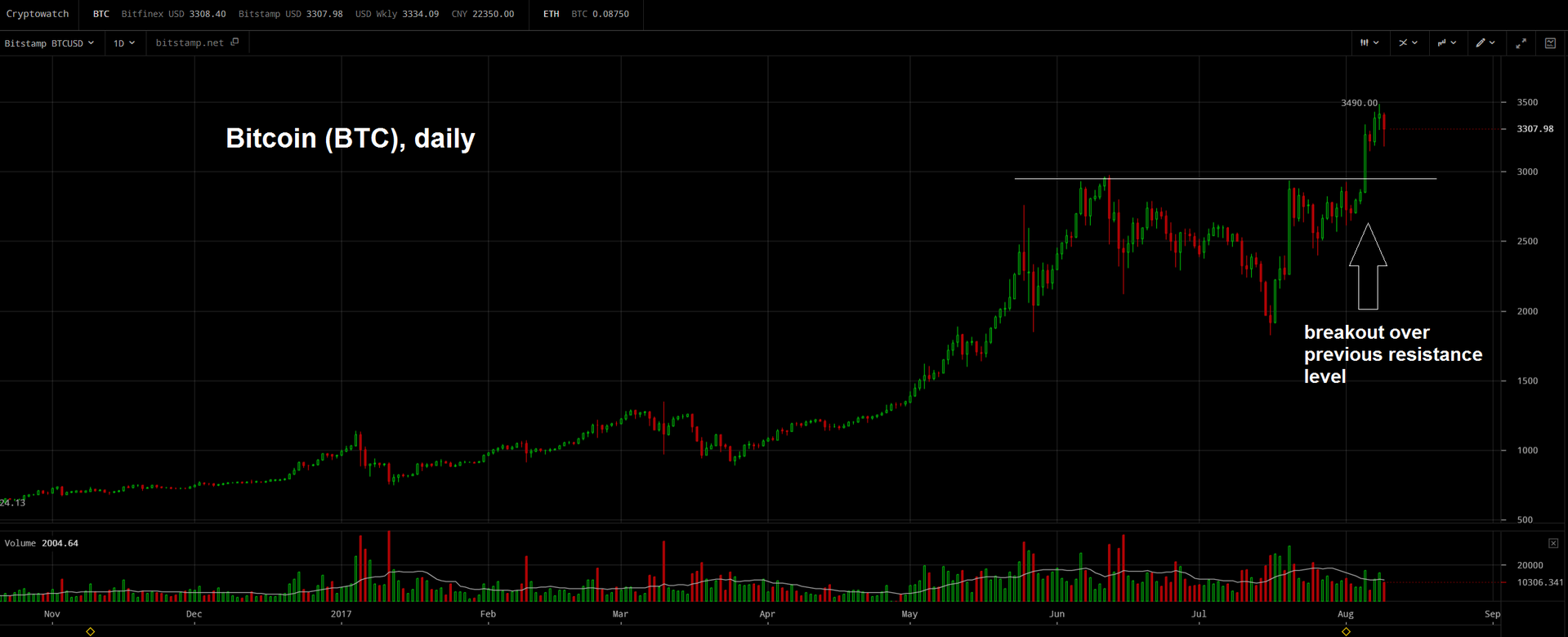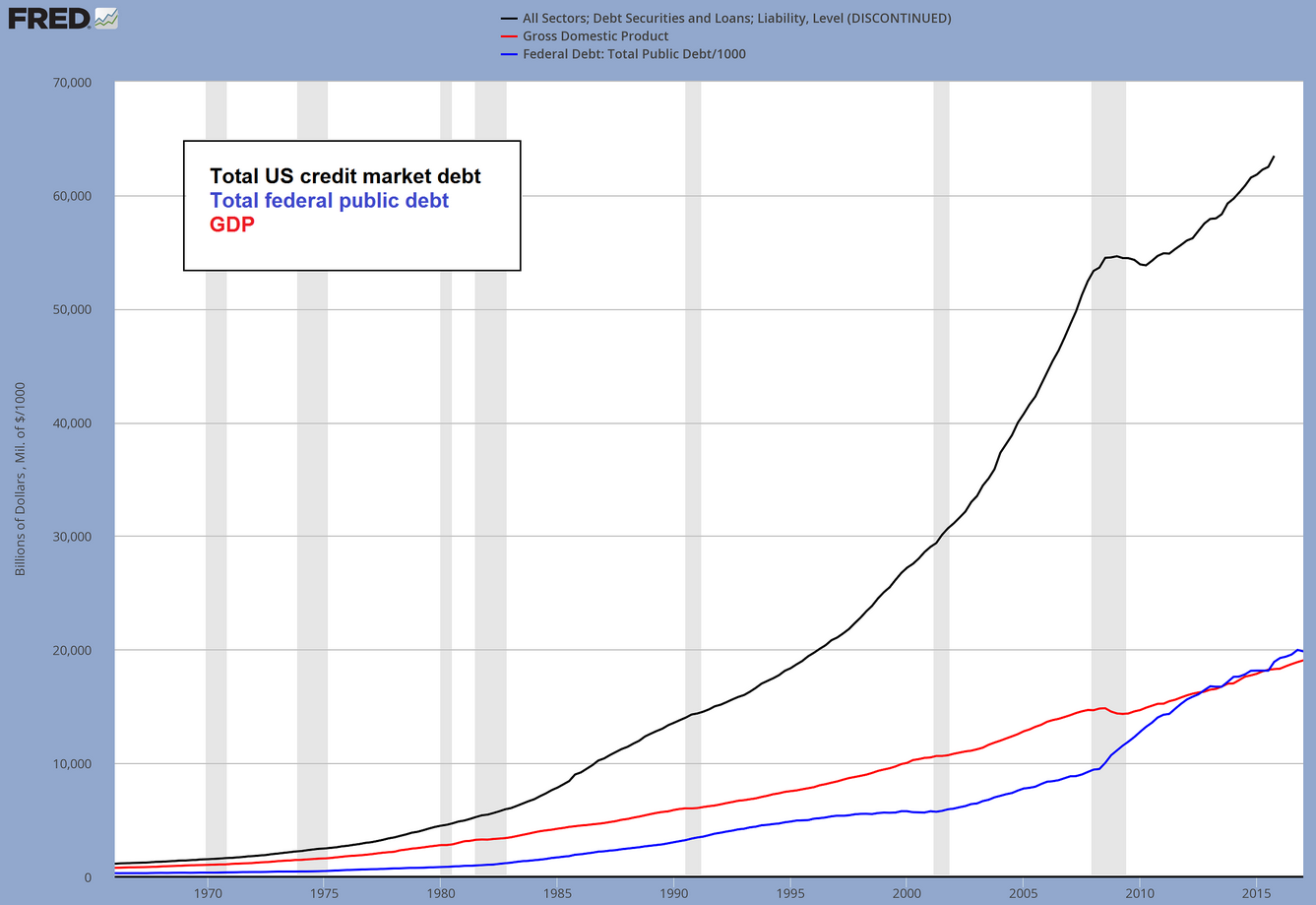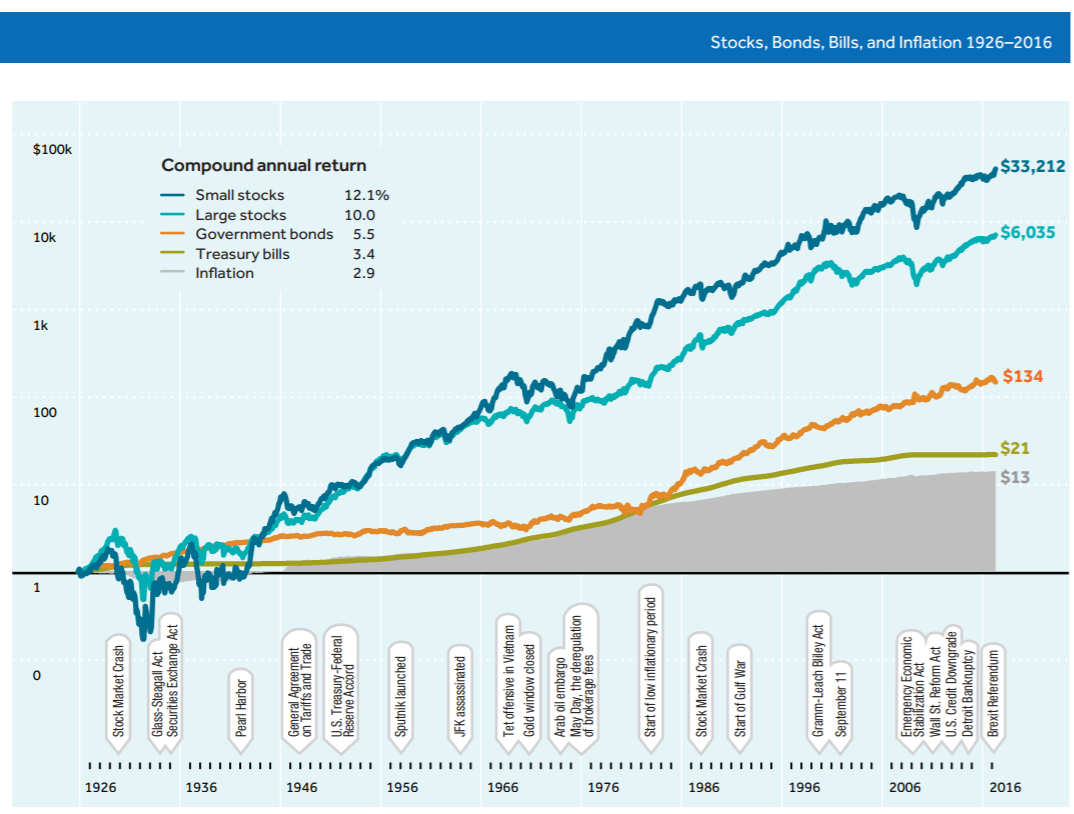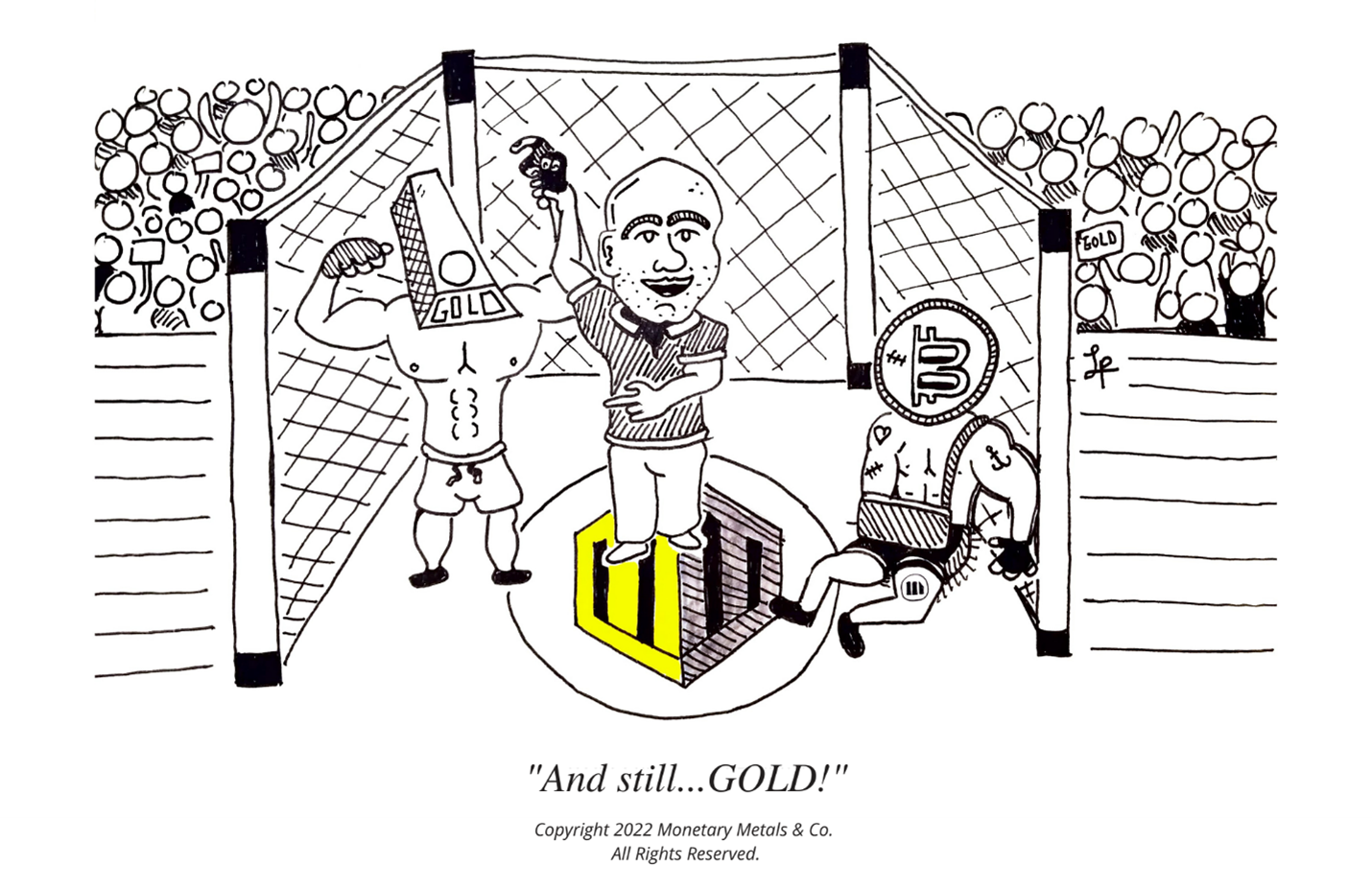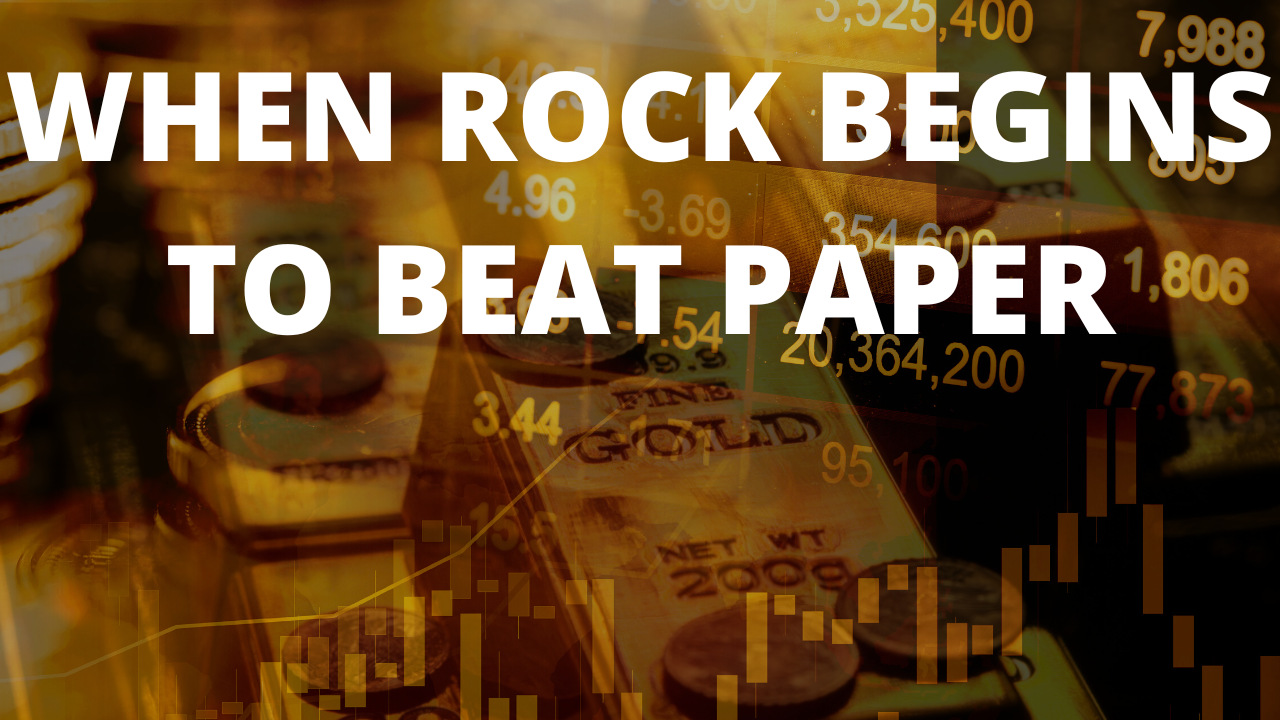Fools and Rascals
|
Tom Waits rasps about time |
| POITOU, FRANCE – “So how much did you make last night?”
“We made about $15,000,” came the reply from our eldest son, a keen cryptocurrency investor. “Bitcoin briefly pierced the $3,500 mark – an all-time high. The market cap of the entire crypto market shot up, too… with daily trading volume also rising. “And remember, this is still a tiny market. Most people don’t own any crypto-currencies. Most people don’t even know what crypto-currencies are. The whole market is only one sixty-fifth the size of the entire gold market. There’s a lot of room to grow. Eventually, everyone will be using cryptos.”
|
Bitcoin Daily 2016-2017(see more posts on Bitcoin, ) |
| The rise of cryptocurrencies is our subject for this week. According to our source, cryptos are not only the most profitable investment in the history of mammon… but also the most important innovation in the financial world since King Croesus minted the first gold coin in Lydia, in modern-day Turkey, nearly 3,000 years ago. | |
| We have been connecting the dots. Between money and economic growth. Between real money and real resources. Between gold and crypto-currencies. Between gold, crypto-currencies… and time.
Today, we stand back – and our mouth drops open as we behold a bigger picture – a breathtaking tableau worthy of Bruegel or perhaps Bosch. Yes, there are the sinners and the saints, the fools and the rascals, the blessed and the damned. All there. The scene brought to light by the latest connecting of dots answers the No. 1 economic question of our time: What went wrong with the 21st century? The simple answer: Economists backed a truck over it. |
Gold Fixing Price 1978-1980(see more posts on gold price, )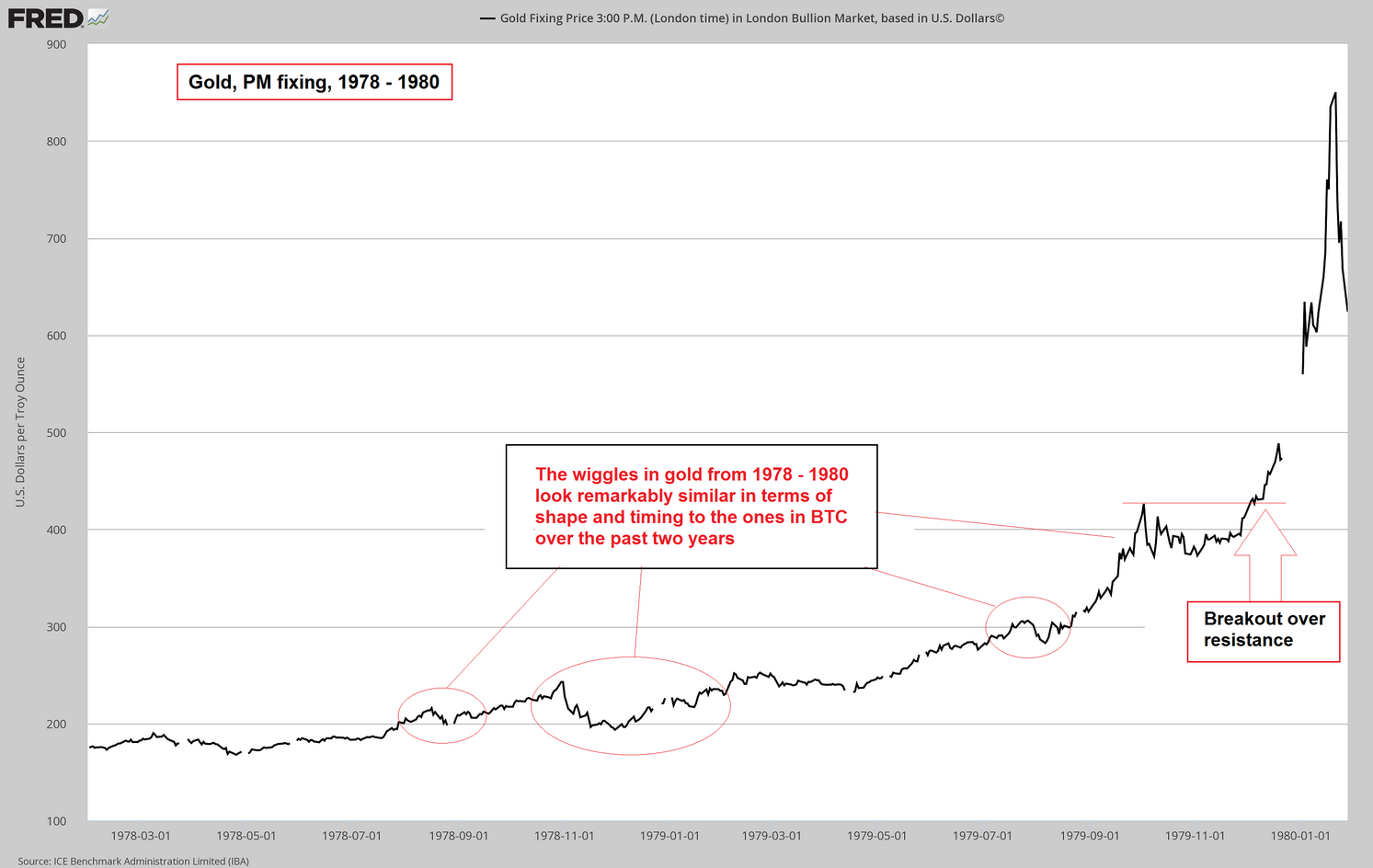 Gold in the late 1970s: the chart pattern is eerily reminiscent of the one that has formed in BTC over the past few years. Of course, bubble patterns almost always display certain similarities, but they are particularly conspicuous in this case (if one zooms further out and includes the rally into the initial gold peak in 1974 and the subsequent mid-cycle correction into 1976, the similarities are even more striking – we will show such a longer-term comparison in an upcoming post). - Click to enlarge |
Flaming DudTo bring readers fully up to speed, the 21st century has been a flaming dud. In practically every way. Despite more new technology than ever, more PhDs, more researchers, more patents, more earnest strivers than ever before sweating to move things ahead… And despite more “stimulus” from the Fed ($3.6 trillion) than ever in history, U.S. GDP growth rates are only half of those of the last century. And household incomes, after you factor in inflation, are flat. In fact, by some calculations – using non-fiddled measures of inflation – growth has been negative for the whole 21st century. Meanwhile, there are more people tending bar or waiting tables… and fewer people with full-time breadwinner jobs. And productivity and personal savings rates have collapsed. And those are only the measurable trends. Political and social developments have been similarly dud-ish – including the longest, losingest war in U.S. history, the biggest government deficits, the most vulgar public life, the least personal freedom and, in our hometown, Baltimore, a record murder rate. What went wrong? Herewith, a hypothesis. It suggests three “causes,” all three linked by a single shared element: time. |
|
Elastic MeasureFirst, we no longer have real money. We have been operating with the feds’ fake dollars since 1971, when President Nixon finally took the U.S. off the gold standard. These fake dollars have no connection to time. They are unlimited in supply, unrestrained by available resources, and unhinged from the real world. Like an elastic tape measure, they give you no way to honestly or accurately measure value. So mistakes, misallocation of resources, and claptrap projects waste time and resources. Some examples: On Main Street, malls got overbuilt – as retailers expanded with cheap credit to sell products to consumers who couldn’t afford them. On Wall Street, private equity hustlers and corporate insiders borrowed heavily at ultra-low rates, paid themselves huge fees and bonuses and left their businesses to go broke (Sears… Payless). In Washington, the Deep State used fake money to transfer real wealth to itself, its clients, and its cronies (defense contractors, Big Pharma, insurers, even private prison operators). The federal government is now looking at average deficits of $1 trillion a year over the next 10 years – which would have been impossible to fund with real money. |
Debt Securities and Loans, GDP, Federal Debt compared 1970-2017 |
| Second, we have too much debt. The consequence of having an almost infinite amount of “money” to lend at derisorily low rates is that you end up with a lot more debt. Consumer, business, and government debt, even stock market margin debt, are at or near record highs.
Debt is a burden that the past imposes on the future. As the weight increases, it becomes harder and harder to move forward. (In their book This Time Is Different, Harvard professors Rogoff and Reinhart showed that as debt increases, growth declines.) Third, we waste too much time. Internet revolutionaries had scarcely found their pitchforks when – in these very pages – we wondered whether the innovation would turn out to be a great boon to the economy or just a time waster like TV. Now, 20 years into the Internet Era – with all its POTUS tweets and Facebook whistles – we can see it is a bust. At least for economic growth. The average Joe now spends 5.6 hours a day consuming digital media (that’s in addition to the five hours he spends watching TV!). Is he learning how to increase productivity? Is he sharpening his masonry skills? Is he studying ancient Greek or brushing up on his calculus? Nah… he’s on a porno site. Or a political rant on Twitter. Or a Facebook blab-fest. And precious time goes by. |
 Wasting time on the intertubes… far right: wasting time before the advent of the internet |
Ultimate Constraint
Fake money causes people to waste time and money. And central bank policies discourage savings by lowering interest rates – even pushing them into negative territory. Instead of saving them for the future, resources are consumed today.
These mistakes accumulate as debt, which then forces people to spend more time servicing the mistakes of the past. Meanwhile, the internet gives people a new way to waste time. At home. At work. On the high plains. Or in the lowlife back alleys. People spend their precious time on idle distractions and entertainments.
That leaves fewer people doing the real work that progress requires – saving, investing, and working for the future. Time is always the ultimate constraint. You can substitute one resource for another. You can switch from oil to solar, or copper to aluminum. But there’s no swapping out time.
There’s nothing like it. Get on the wrong side of time, and you are out of luck.
Charts by: Cryptowatch, St. Louis Fed
Chart and image captions by PT
Full story here Are you the author? Previous post See more for Next postTags: Bitcoin,gold price,newslettersent,On Economy,On Politics









